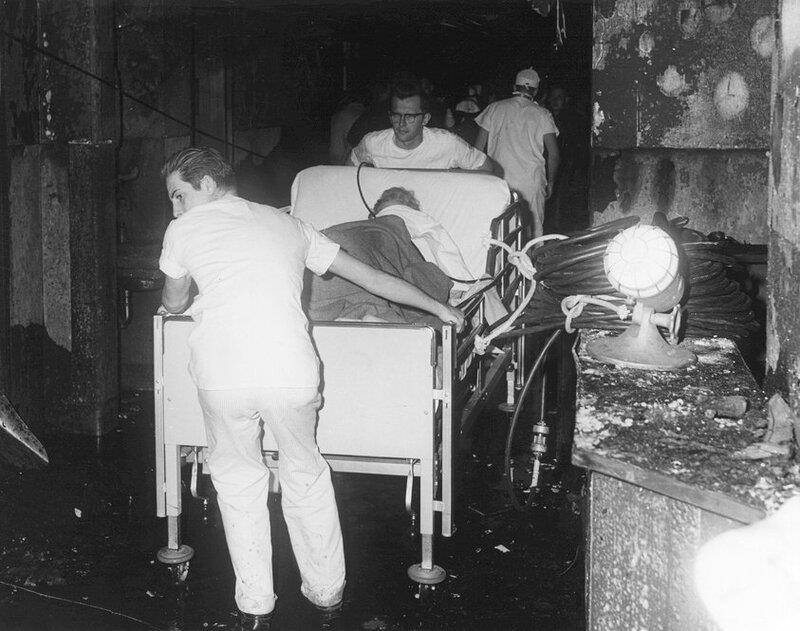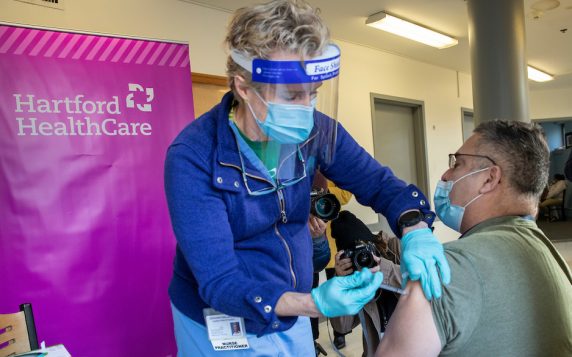Dec. 8 marked the 60th anniversary of the deadly fire at Hartford Hospital that claimed the lives of 16 people. From that tragedy, sweeping changes reshaped hospital safety laws not only on the Hartford Hospital campus but also at hospitals across the country.
On that day in 1961, cigarette ashes discarded down a trash chute from the hospital’s ninth floor ignited, sending a fireball back up to the ninth floor. It blasted the doors off the chute, sending a wall of flames and smoke through the floor. Employees, patients and visitors were trapped with nowhere to go, one floor above the spot where fire ladders had extended to their fullest, unable to reach the victims.

In the days and weeks that followed, local and federal officials and experts scrutinized everything from smoking practices to fire door size to sprinklers. In a gesture of full transparency, Stewart Hamilton, the hospital’s president, invited hospital administrators from around the country to visit the site and learn from it to ensure a tragedy of this magnitude would never happen again.
As a result of the fire, voluntary standards, and in many cases laws, were instituted that include:
- Banning laundry chutes.
- Limiting (and subsequently prohibiting) smoking.
- Total fire protection including sprinkler systems.
- New fire door standards.
- Fire drills/fire escapes.
- Flame retardant building materials.
- No dead end corridors.
- Creating a fire safety committee.
Craig Stegmaier, Hartford HealthCare’s System Manager for Fire and Life Safety, says the fire had a profound effect on hospital safety that continues to this day.
“It has changed how hospitals are built,” he says. “Countless lives have been saved.”
He uses the hospital’s Bliss Expansion as an example: “In planning and building the Bliss Expansion, many of the standards in place come directly from the fire of 1961. Materials are more flame retardant because of the fire’s influence. We are still learning lessons from it.”
Ten years ago, Hartford HealthCare produced a documentary to commemorate the 50th anniversary of the fire, which includes hospital employee accounts and film shot inside the hospital as the fire raged:
Stegmaier also notes that while hospital staff is diligent about keeping the campus safe, it’s amplified this time of year when people are “decking the halls” with holiday cheer.
“This time of year we are diligent about decorations,” he says. “We don’t want to relive the past and work very hard to keep our patients, visitors and colleagues safe.”


